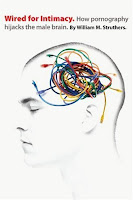Q&A: ‘Ministers: we accept equality’. What are your thoughts?
 Clara asks (on my facebook wall): I read an interesting article today titled, ‘Ministers take aim at religious extremists: we accept equality’. Wondered your thoughts on this issue.
Clara asks (on my facebook wall): I read an interesting article today titled, ‘Ministers take aim at religious extremists: we accept equality’. Wondered your thoughts on this issue.
The article that Clara refers to is this: http://www.news.com.au/national-news/federal-election/ministers-take-aim-at-religious-extremists-we-accept-equality/story-fnho52ip-1226676430143
The signatories to the letter referred to in the article can be found here: http://www.australianmarriageequality.com/wp/2012/04/04/42-multi-faith-clergy-call-for-marriage-equality/
The letter is actually quite old (April 2012). The fact that it is being raised in July 2013 as a rhetorical riposte to ACL attacks on Kevin Rudd is symptomatic of how these things get used as political footballs: “Christians talking against gay marriage? Well, here’s our Christians talking about gay marriage and they support us!” There’s nothing particularly wrong with that, that’s one of the reasons the letter was written in the first place I’m sure.
So what are my thoughts? Nothing profound really.
This not a surprise. The signatories to the letter are mostly your left-leaning Anglicans and Unitings with the odd Baptist and so forth. Nothing unexpected. We could talk about how representative these leaders are of the Christian populace and the fact that they generally belong to the parts of the church that are in decline, but whatever, that isn’t the point.
For me the two interesting things are this:
1) Firstly: Christians must demonstrate that their views are Christian.
I’m not saying that these leaders aren’t Christian. What I am saying is that it is not enough to say “I’m a Christian and I support SSM.” They need to articulate and demonstrate the connections between the Christian philosophy and the SSM agenda and why they are congruous and supportive of one another. This is how you give your support substance and weight.
It is particularly so when you have signatories from a wide range of faith positions (including non-Christian) – what philosophical ground, that is common and not antagonistic to the positions held, is being used to espouse the opinion? Without that it’s not much more than a rather small petition.
From what I can see of the text of the letter (not easily accessible as far as I can see, even through the AME website) this hasn’t been done. The two texts I do have are this excerpt:
“As clergy from various different faiths and denominations in Australia, we believe marriage is a fundamental institution in our society. It fosters greater commitment between partners, provides children with a sense of security and stability, and strengthens ties with families and communities. Marriage is a blessing to be shared, so we encourage people of faith who support marriage equality to voice their support for the reform by responding to the House of Representatives inquiry on same-sex marriage today.”
This isn’t much more than the “marriage is a blessing” and “blessing should be shared” argument. Which says nothing at all really. None of us will disagree on the blessing of marriage. What we do disagree on is the characteristics of marriage which inform and construct and advance that blessing.
Rowland Croucher (say it ain’t so Rowland!) is the other text which does inform this a bit:
“How can I, a heterosexual who’s been very happily married for 50 years, tell anyone else they don’t have the right to form a loving, committed, lifelong union and enjoy the fruits of marriage as I have done?” wrote Reverend Dr Rowland Croucher, from John Mark Ministries, Victoria. “Marriage is not a club to be restricted to some. Like the Gospel, it is a blessing to be shared.”
And at least he gives some reasoning, albeit thin. Here Dr. Croucher connects “marriage” to the inclusivity of the gospel. Which has some merit, because the gospel is inclusive.
(The “how can I tell anyone else line” is rhetorical fluff because it doesn’t speak to the core issue of what marriage actually is, just to the fact that whatever it is it cannot be arbitrarily restricted – we all agree with that.)
Now this is all great, but as Christian leaders, these people need to present a clear and coherent connection between a Christian framework and their position. I won’t reiterate all that here, but the sorts of questions that go unanswered by Croucher et al. include clear rebuttals “OK, Rowland, but the Gospel is also exclusive (Christ alone) and calls for a surrender of one’s whole life (including sexual activity, both hetereosexual and homosexual), how do you coincide these Christian truths with your statement about marriage?” And also fundamental questions of epistemology, Scriptural affirmations of the connection of marriage with the created order and so on.
In other words (and this speaks to why marriage is so contentious), our understanding of marriage derives from the full sweep of Christian philosophy. If you’re going to talk about this you need to demonstrate coherence across the whole. These signatories haven’t done this.
2) Secondly: “Christian” is not a badge. It’s used that way by revisionists all the time who think in terms of “attributes” and “minorities.
Religion has become an “attribute” of a person, not a voluntary and adopted wholistic framework for life. Therefore if you can demonstrate that one “Christian” agrees with you, you can assert that there is no reason why someone else wearing that badge shouldn’t also.
This is an insipid and patronising understanding of how religion and worldviews work. The badges don’t matter, it’s the substance that counts. The people that don’t support SSM have good reasons for not doing so. It’s not enough to throw their badge back at them, you actually have to deal with their reasonings and demonstrate their unreasonableness.
To conclude. What are my thoughts? Nothing unexpected, just another demonstration of the insipidness that tends to dominate this debate.











